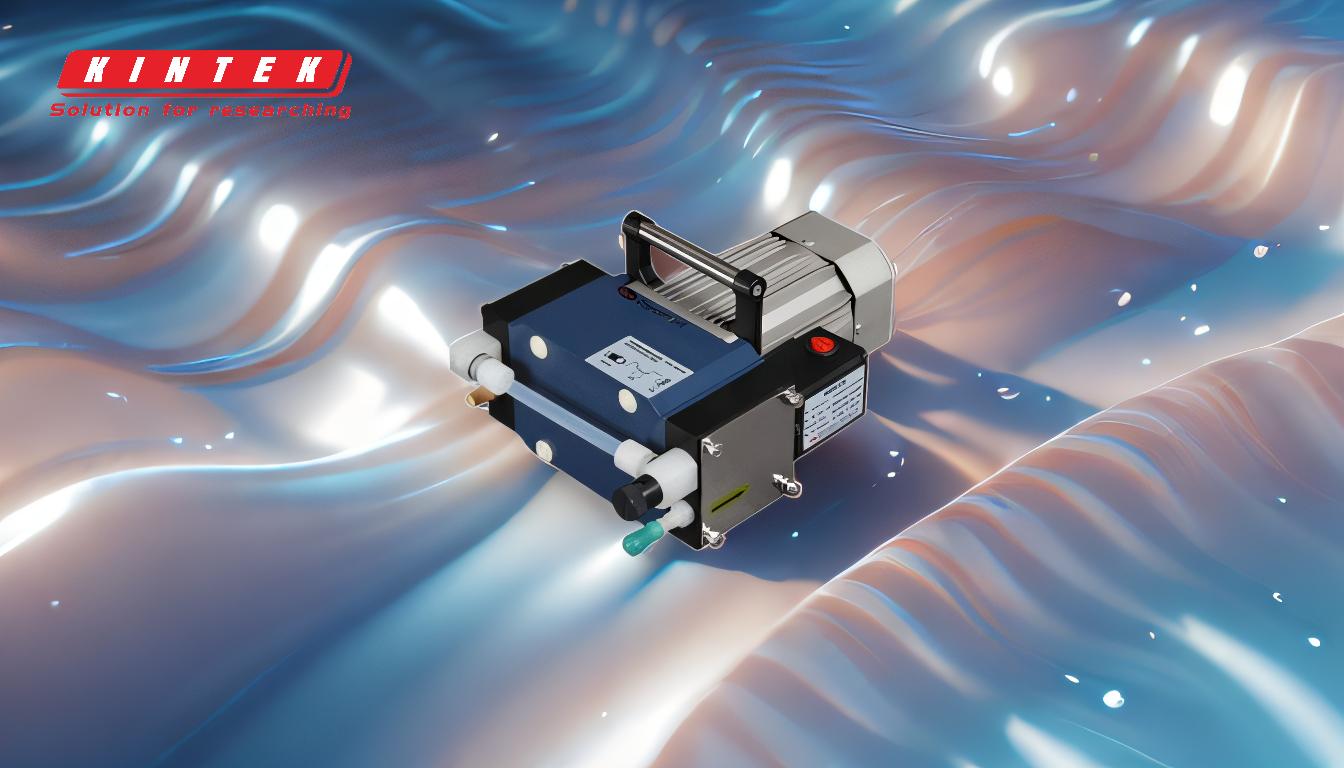Vacuum pumps can run continuously, but their ability to do so depends on the type of pump, its design, maintenance practices, and operating conditions. Continuous operation is achievable for many vacuum pumps, especially those designed for industrial or laboratory use, but it requires proper maintenance, monitoring, and adherence to manufacturer guidelines. Failure to maintain the pump, such as neglecting fluid changes or allowing fluid levels to drop, can lead to severe damage, particularly in oil-sealed vane pumps. Below, we explore the factors that influence continuous operation and how to ensure long-term reliability.
Key Points Explained:

-
Types of Vacuum Pumps and Continuous Operation
- Oil-Sealed Vane Pumps: These pumps rely on oil for sealing and lubrication. Continuous operation is possible if the oil is regularly changed and maintained at the correct level. However, neglecting maintenance can lead to overheating and catastrophic failure.
- Dry Pumps: Dry vacuum pumps, such as diaphragm or scroll pumps, do not use oil and are often designed for continuous operation. They are less prone to fluid-related issues but still require routine maintenance.
- High-Vacuum Pumps: Pumps like turbomolecular or diffusion pumps are typically used in high-vacuum applications and may not be designed for continuous operation unless specified by the manufacturer.
-
Maintenance Requirements for Continuous Operation
- Fluid Maintenance: For oil-sealed pumps, regular oil changes are critical to prevent contamination and ensure proper lubrication. Dirty or degraded oil can cause overheating and wear.
- Fluid Level Monitoring: Allowing fluid levels to drop below the recommended level can lead to insufficient lubrication, increased friction, and pump failure.
- Filter Replacement: Filters should be checked and replaced as needed to prevent debris from entering the pump and causing damage.
- Temperature Monitoring: Continuous operation can generate heat, so monitoring the pump's temperature is essential to avoid overheating.
-
Operating Conditions and Environmental Factors
- Load and Duty Cycle: The pump's load and duty cycle should align with its design specifications. Overloading the pump or operating it beyond its rated capacity can reduce its lifespan.
- Ambient Temperature: High ambient temperatures can exacerbate heat buildup, so adequate cooling and ventilation are necessary.
- Contaminants: In environments with high levels of dust or contaminants, additional filtration or protective measures may be required to prevent damage.
-
Manufacturer Guidelines and Specifications
- Always consult the manufacturer's guidelines for specific recommendations on continuous operation. Some pumps are explicitly designed for 24/7 operation, while others may have limitations.
- Follow the recommended maintenance schedule and operating parameters to ensure optimal performance and longevity.
-
Signs of Potential Issues During Continuous Operation
- Unusual Noise: Grinding or knocking sounds may indicate insufficient lubrication or mechanical wear.
- Reduced Performance: A drop in vacuum level or slower evacuation times can signal a problem with the pump.
- Overheating: Excessive heat is a clear sign of potential issues, such as low fluid levels or clogged filters.
-
Best Practices for Ensuring Continuous Operation
- Regular Inspections: Conduct routine inspections to identify and address potential issues early.
- Proper Lubrication: Ensure that oil or other lubricants are always at the correct level and quality.
- Cooling Systems: Use appropriate cooling systems or ventilation to manage heat buildup during continuous operation.
- Training and Awareness: Ensure operators are trained to recognize signs of trouble and understand the importance of maintenance.
By following these guidelines and maintaining a proactive approach to pump care, continuous operation of a vacuum pump is achievable and sustainable. However, it is crucial to understand the specific requirements of your pump type and operating environment to avoid costly damage and downtime.
Summary Table:
| Factor | Details |
|---|---|
| Types of Pumps | Oil-sealed vane, dry pumps, high-vacuum pumps |
| Maintenance Requirements | Regular oil changes, fluid level monitoring, filter replacement, temperature checks |
| Operating Conditions | Load and duty cycle, ambient temperature, contaminants |
| Manufacturer Guidelines | Follow specific recommendations for continuous operation |
| Signs of Issues | Unusual noise, reduced performance, overheating |
| Best Practices | Regular inspections, proper lubrication, cooling systems, operator training |
Ensure your vacuum pump's continuous operation—contact our experts today for tailored advice!








